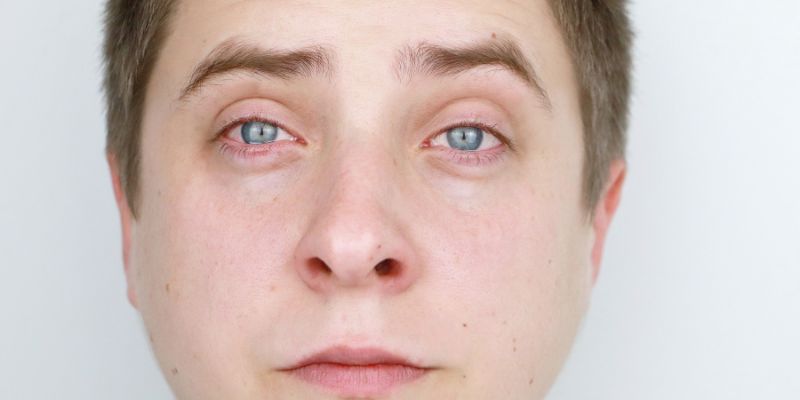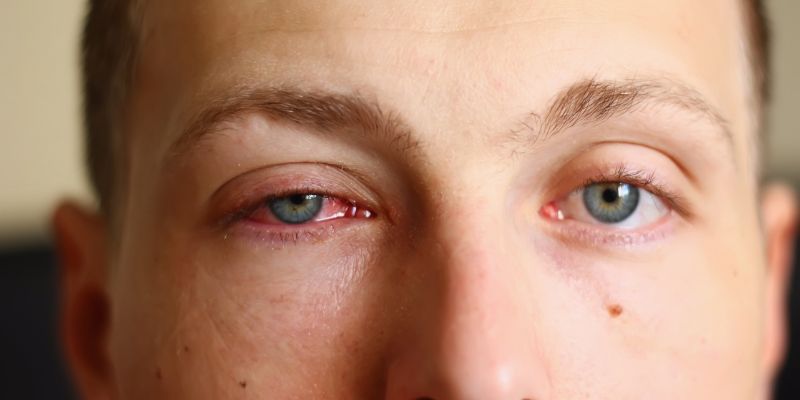Eye Allergies Vs. Pink Eye: Understanding The Key Differences
Two somewhat common but different eye issues are pink eye and eye allergies. Both can produce redness, itching, and pain, often leading to confusion. Their reasons, treatments, and degree of severity vary greatly. Allergens, including pollen, dust, or pet dander, cause eye allergies by setting off an immunological reaction. Conversely, pink eye, also known as conjunctivitis, is brought on by irritants like smoke or bacterial or viral diseases.
While some kinds of pink eye are contagious, allergies are not communicative. Correct treatment depends on awareness of these variations. While pink eye could call for antibiotics or calming treatments, allergies are controlled with antihistamines or avoiding triggers. This guide will walk you through the symptoms, causes, and therapies of various eye disorders, enabling you to recognize and properly treat them.

What Are Eye Allergies and Pink Eye?
Knowing what these allergies are is important.
Eye Allergies
Eye allergies result when the immune system responds to allergens, including pollen, dust, pet dander, or mold, a condition known as allergic conjunctivitis. These allergens irritate the eyes and cause redness, itching, swelling, and watery discharge. Ocular allergies are not contagious and usually affect both eyes concurrently. They sometimes follow seasons or are brought on by extended exposure to particular triggers.
Pink Eye
Medically called conjunctivitis, pink eye is inflammation of the conjunctiva, the translucent tissue covering the white portion of the eye and inner eyelids. Allergic responses, irritants like smoke or chlorine, and bacterial or viral infections can bring it on. Unlike eye allergies, pink eye is frequently contagious by infections and can be transmitted through direct touch with contaminated surfaces, objects, or people. Depending on the irritant's source, it could impact one or both eyes. Appropriate treatment depends on a knowledge of these variations.
Symptoms of Eye Allergies and Pink Eye
The common symptoms of Eye Allergies and Pink Eye are listed below:
Eye Allergies
- Strong itching in both eyes.
- Redness and eye-watering behavior
- Eyelid swelling
- Lighter sensitivity
- Stinging in both eyes or ongoing burning.
- Irritation and regular blinking.
- Slight eye irritation or soreness.
Many times, symptoms are more severe in environments with allergies. They improve with either the beginning or stopping of exposure in treatment.
Pink Eye
- Redness either in one or both eyes
- Either heavy or watery discharge from the eyes
- There is a gritty feel in the eyes
- Crusting around the eyes, often following sleep
- Swelling around the eyes gives them an inflated look.
- Experience of dryness or sand-like particles in the eyes.
- Sensitivity to light creates discomfort.
Usually, the bacterial pink eye has more discharge, while the viral pink eye is watery. Though it is not communicable, allergic pink eye has traits of ocular allergies.

Treatment Options for Eye Allergies
Effective management of ocular allergies calls for treating the symptoms and avoiding the aggravating factors. The following are some often-advised therapeutic approaches:
- Antihistamines: These medications are necessary to combat the symptoms of eye allergies. Their effect inhibits histamines, which cause allergic responses such as stinging, redness, and swelling. Frequent use greatly increases comfort.
- Artificial Tears: These over-the-counter eye drops are widely used. They not only alleviate dryness but also assist in clearing irritants that can aggravate your eyes. Regular treatment keeps your eyes moist and less prone to irritation.
- Decongestant Eye Drops: These drops help to lower allergy-related redness. Nevertheless, prolonged use should be avoided since it might cause rebound redness or reliance, worsening the situation.
- Avoiding Allergens: Prevention is crucial. Flare-ups can be avoided by spotting pollen, dust, mold, or pet dander triggers and reducing contact with them.
Treatment Options for Pink Eye
With treatment based on the particular cause, pink eye, sometimes known as conjunctivitis, can be brought on by viruses, bacteria, or allergies.
- Viral Pink Eye: This is the most often occurring kind, usually resolving on its own in one to two weeks. Warm compresses placed on the eyes several times daily help reduce discomfort. Additionally useful for reducing symptoms are over-the-counter painkillers and artificial tears.
- Pink Eye: Bacterial conjunctivitis is highly contagious and usually requires medical attention. Antibiotic eye drops or ointments are most effective in clearing the infection. Even if symptoms get better before the antibiotics are stopped, it is advisable to finish the full course of the medications.
- Allergic Pink Eye: Like eye allergies, this type results from allergens setting up an immunological reaction in the eyes. Antihistamine eye drops can relieve redness, irritation, and swelling. Other therapies to help with symptoms include anti-inflammatory medications and decongestant eye drops.
Prevention Tips for Eye Allergies and Pink Eye
The prevention tips of Eye Allergies and Pink Eye are listed below:
For Eye Allergies
- Keep your surroundings clean and allergen-free. Frequent cleaning lowers dust, pollen, and pet dander exposure.
- Wash your hands often and avoid touching your eyes. This keeps allergens off your eyes and prevents them from being transferred.
- Use protective eyewear in dusty or chemical-prone areas. Guard your eyes against airborne allergens and irritants.
For Pink Eye
- Avoid sharing towels, makeup, or personal items. Stop the pink eye-causing bacteria and virus from proliferating.
- Wash your hands often and avoid touching your face. This helps prevent contagious agents from reaching the eyes.
- Disinfect frequently touched surfaces and objects. It reduces the possibility of disseminating viral and bacterial conjunctivitis.
Conclusion:
Though separate disorders, pink eye and eye allergies have similar symptoms. Allergens, including pollen, dust, or pet dander, set off eye allergies that cause eye irritation. Pink eye, or conjunctivitis, is often brought on by bacterial or viral infections or irritants like smoke and chemicals. Though their underlying causes and treatments differ, both disorders can produce redness pain. Early identification and efficient treatment of these disorders depend on knowing their symptoms. Correct treatment depends on seeing an eye professional for chronic or severe symptoms. Preventing problems and looking after your eyes will help to guarantee comfort.












